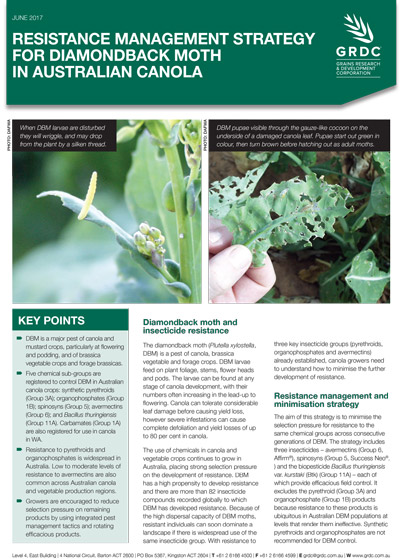Resistance Management Strategy For Diamondback Moth In Australian Canola
Resistance Management Strategy For Diamondback Moth In Australian Canola
Published: 01 Jun 2017
Diamondback moth and insecticide resistance
The diamondback moth (Plutella xylostella, DBM) is a pest of canola, brassica vegetable and forage crops. DBM larvae feed on plant foliage, stems, flower heads and pods. The larvae can be found at any stage of canola development, with their numbers often increasing in the lead-up to flowering. Canola can tolerate considerable leaf damage before causing yield loss, however severe infestations can cause complete defoliation and yield losses of up to 80 per cent in canola.
Key Points
- DBM is a major pest of canola and mustard crops, particularly at flowering and podding, and of brassica vegetable crops and forage brassicas.
- Five chemical sub-groups are registered to control DBM in Australian canola crops: synthetic pyrethroids (Group 3A); organophosphates (Group 1B); spinosyns (Group 5); avermectins (Group 6); and Bacillus thuringiensis (Group 11A). Carbamates (Group 1A) are also registered for use in canola in WA.
- Resistance to pyrethroids and organophosphates is widespread in Australia. Low to moderate levels of resistance to avermectins are also common across Australian canola and vegetable production regions.
- Growers are encouraged to reduce selection pressure on remaining products by using integrated pest management tactics and rotating efficacious products.
Download PDF
Region: National

